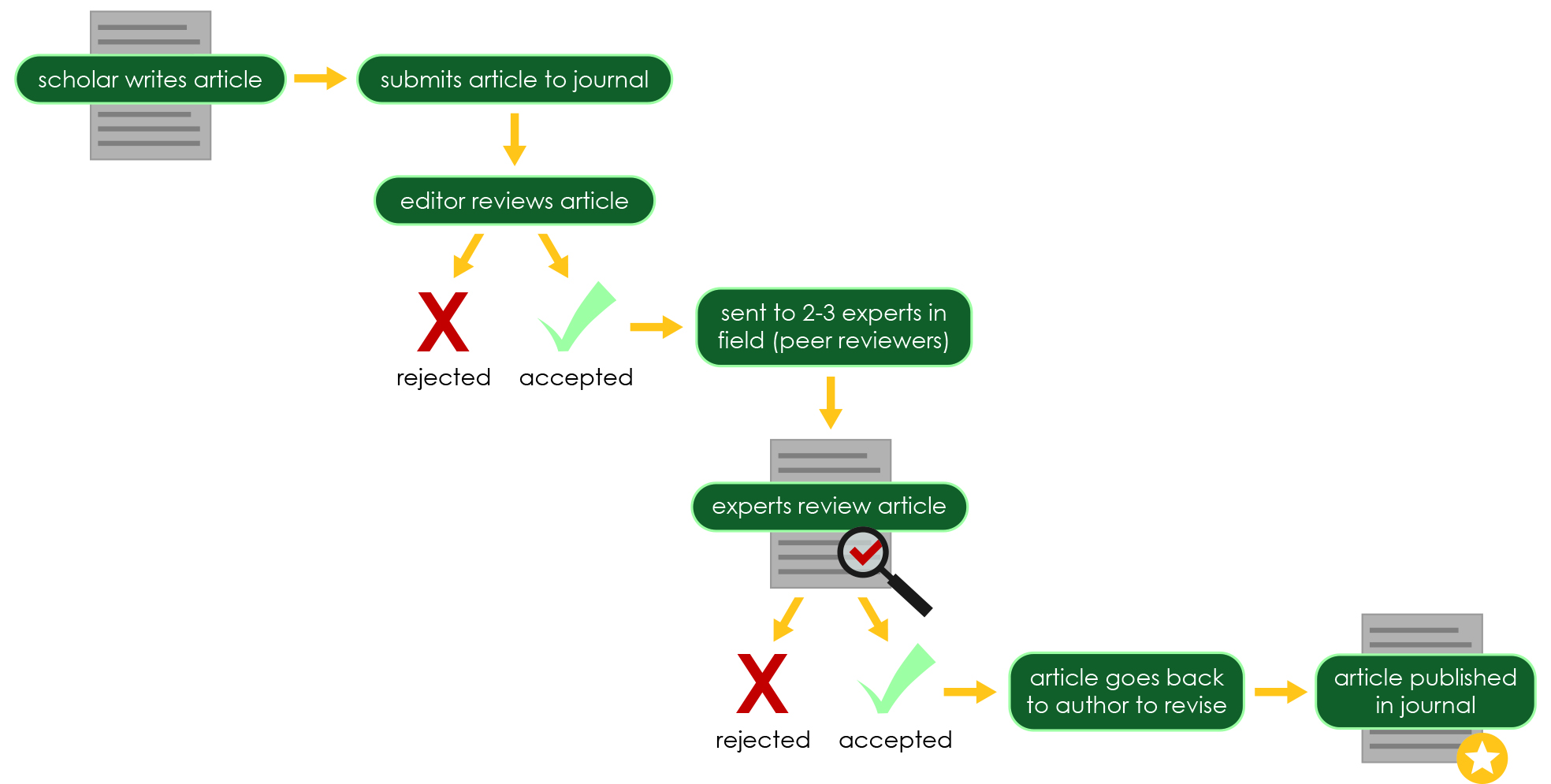What are peer-reviewed journal articles?
Peer-reviewed journal articles are the main way that scholars share the results of their research with others in their field. Before they are published, these articles go through a multi-step process involving research, writing, peer-review, and revision.
- The researcher develops a research question and hypothesis, performs the research, and writes about their findings in journal article format.
- The researcher submits the article to a scholarly journal to see if they will publish it.
- The journal’s editor, another expert in the author’s field, reads the article. If the editor is not interested, the article is rejected, and the author can try submitting it to a different journal.
- If the editor thinks the article might merit publication, it is distributed to two or three expert researchers in the author's field for peer-review.
- The reviewers examine the article’s research methodology, reasoning, originality, and significance, and recommend either rejecting or accepting it. Even if the article is accepted, the reviewers usually have comments and revisions for the author to make before the article is published.
- The author revises the article, and it is returned to the reviewers. If the revisions satisfy their recommendations, the article is accepted for publication.
- Accepted articles are published in scholarly journals, where other interested scholars — including students — can read about the author’s research and findings.

